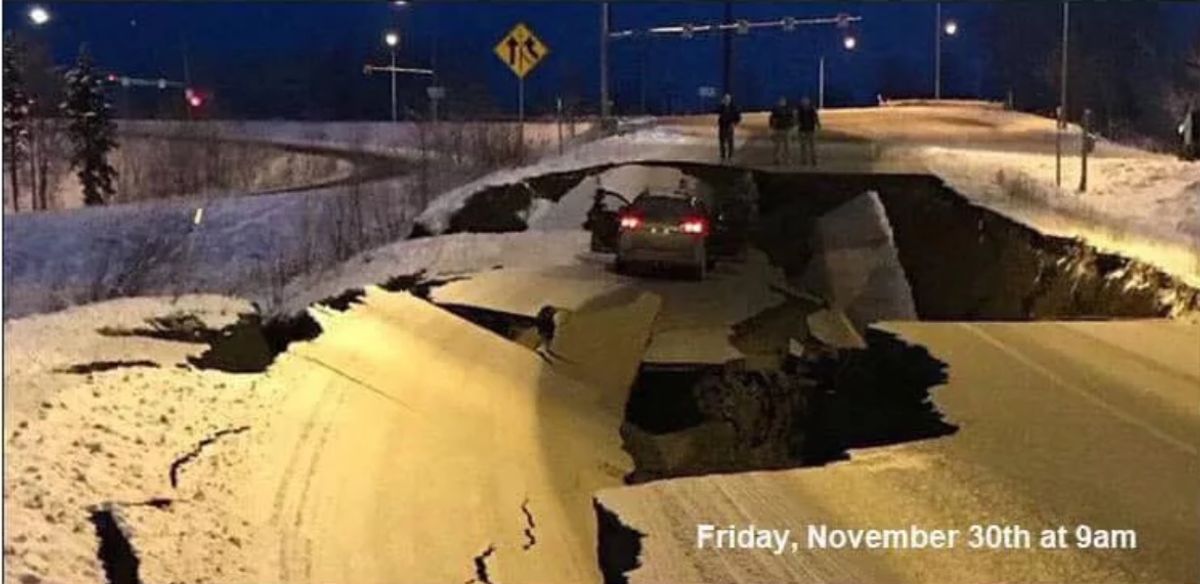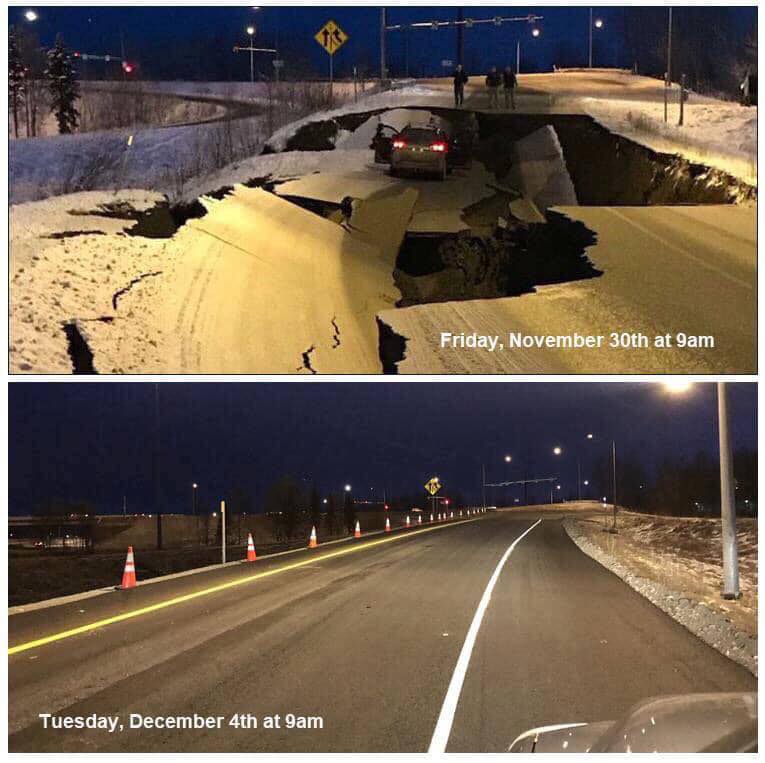A set of photographs, one showing a road in Alaska severely damaged by a 7.0 earthquake that hit the state of on 30 November 2018, and another purportedly showing that same road fully repaired just a few days later, was widely circulated on social media. As many viewers encountered these images in online posts from unofficial sources (and/or didn't believe that construction crews could fix a pothole, let alone an entire road, in just a few days), these photographs were often greeted with skepticism:
Both of these images are authentic and were taken on the dates listed.
This set of photographs was originally posted to Facebook by Alaska Tour & Travel, a vacation-planning company, along with the following description: "Here is just another great example how Alaskans are responding after last Friday’s earthquake! The off-ramp at International Airport Road and Minnesota Boulevard in Anchorage was reopened early this morning, complete with new asphalt."
The Anchorage Police Department also shared these pictures to their Facebook page with the caption "fantastic progress," and an update posted by the Alaska Department of Transportation and Public Facilities confirmed that this section of road had reopened: "Minnesota Drive Northbound and Southbound Ramps to International: OPEN all lanes."
The Alaska Department of Transportation (AKDOT) took to Twitter to provide some information about how winter road repairs are accomplished. AKDOT said that paving roads in the winter isn't ideal, but it's also not impossible:
Paving in the winter isn't ideal, but it's also not impossible. Check out the replies to this post to see what we're doing to make sure repairs to quake-damaged asphalt are properly compacted before they get too cold. pic.twitter.com/BpPBKMbv9S
— Alaska DOT&PF (@AlaskaDOTPF) December 3, 2018
Paving in the winter isn't ideal, but it's also not impossible. Check out the replies to this post to see what we're doing to make sure repairs to quake-damaged asphalt are properly compacted before they get too cold.
We will add chemicals to the asphalt to lower the temp at which it can be compacted, get the mix extra hot before we pave, place a thicker layer so it takes longer to cool, & tarp loads to keep them hot during transport.
We will use multiple large rollers to compact it quicker, use the closest plants available to cut down on haul times, minimize truck wait times, and pave continuously without stopping.
It's harder to pave in the winter and it uses more resources, but when it needs to be done, we know how to do it right. Alaska's contractors are experienced and they are dedicated to repairing the asphalt surfaces damaged by this quake.


